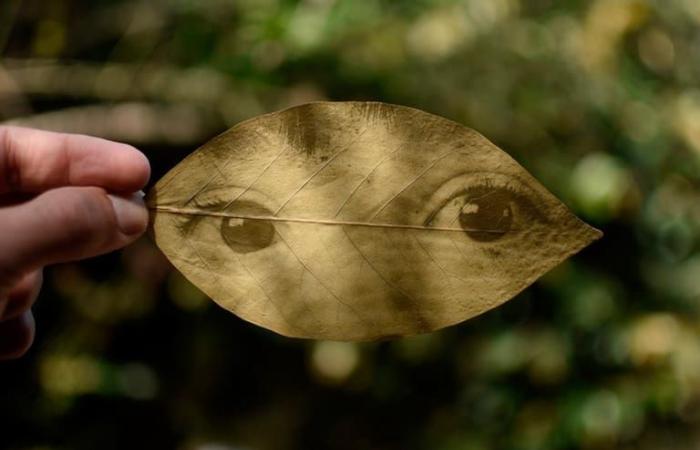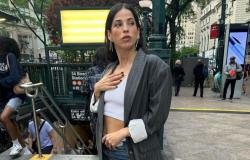
Hear
A soda can, a garbage container, a telescope, or even a dark room in a building with a beam of light shining through the window: all of these can become a camera.This is demonstrated by an exhibition curated by Francisco Medail, with works by more than twenty emerging and established artists, which can be seen until the end of the year at the CCK. In the beginning was magic proposes “a return to the elementary concepts of photography” in times when telephones allow us to record everything, minute by minute.
TO Daniel Tubiohowever, it took him months to capture each of the images on display. In different places – from Avellaneda and Saavedra to Sarandí or the Tigre Delta, and even in a kiosk located in front of the old Post Office – he placed cans with a small hole and photosensitive paper inside. He thus turned them into pinhole cameras, without lenses, which allowed him to create solarigraphies: photographs without the intervention of chemical processes, in which the visible path of the sun is recorded for long periods of time. She then scanned and processed the negatives digitally, to achieve images that look like nocturnal rainbows.
A similar operation was carried out by the group Swill with a garbage containerwhich he transformed with a hole into “an instrument of expression.” In different parts of Buenos Aires, Rodrigo Agüero Zubiaurri, Natacha Ebers and Rocío Pilar Mendez Brisighelli captured the activity of anonymous people and the dynamics of the city.
Medail went even further, converting an entire room at the CCK into a camera obscura for this exhibition.: the thread of light that enters during the day through the window, covered by a metal sheet, allows the building located on the opposite sidewalk, on Leandro N. Alem Avenue, to be reflected on the wall in an inverted manner. “This is the first optical system observed in the history of mankind”explains the curator.
A reverse process inspired Facundo de Zuviria during the pandemic. Instead of creating dark chambers, He left books from his library on sheets of emulsified paper in full sun on his balcony.. After a few minutes, each copy left a white “shadow”, surrounded by a Prussian blue frame. Those cyanotypes, in addition to being represented in this exhibition, starred in another until yesterday at the National Museum of Fine Arts. There, weeks ago, a book was presented that brings together almost fifty of those original quarantine memories.
“The cyanotype is one of the earliest forms of photography and, in fact, accurately embodies its etymological definition: photo (light and graphos (writing): written with light”recalls De Zuviría. This technique, he adds, “was created by William Henry Fox Talbot in England, around 1840, and developed a couple of years later by Anna Atkins to record the species of algae found on the English coast. Atkins compiled and edited these images in an album that she called British Algae (1843), now considered the first photobook of which there is any record.”
Vegetables can even become image supports.. His pigments and sensitivity to light helped him Fede Ruiz Santaesteban to create the Revelations of the Magic Garden: using the technique of antiotype, managed to make mysterious looks appear on a wide variety of leaves. They are reminiscent of those that Graciela Sacco, master of heliography, printed on decals that she distributed and pasted in the corners of Venice during the 2001 biennale.
The same procedure was used by Celica Veliz in his series Sensitive surfacesonly in his case he appealed to beet pigments, turmeric, spirulina and paprika. These inks allowed him to print in different colors a portrait of her grandmother, made by her grandfather in her house in the Agronomía neighborhood in the 1950s.
Instead of digging into the roots of the family tree, Giovana Zuccarino looked up at the sky: the works on display belong to a series of photographs of the Moon taken through the telescope equatorial Gautier, from 1882, with a plate camera that he attached to the device and the wet collodion technique –a type of varnish that is poured on glass–, whose origin dates back to the mid-19th century.
Much more contemporary is the camera designed by Esteban Pastorino which allows the film to be exposed continuously without cuts, while rotating on itself. Mounted on the roof of a car that drove through Parque Patricios in 2009, it captured a distorted and continuous image of the neighborhood. What is exhibited are the negatives of that circular landscape from the series Panoramic viewswhich caused a sensation when it was exhibited by the gallery Del Infinito in arteba and Pinta BAphoto.
No less sensation will be provoked in visitors to this exhibition by the series of highly erotic content made by Natacha Ebers. The artist He appealed to his own naked body and to various photographic devices that work “like looking in the mirror.”. “They are an intimate and anxious act of desire, which burns like sunlight burning photosensitive paper,” the room text points out, as if it were necessary. Very different from the black and white portraits backlit by Rosana Schoijettevoking hand-cut Victorian silhouettes.
Perhaps there lies the answer to the question: “Can photography surprise us again?” The curator adds that, “if the capacity for wonder of something is inversely proportional to its everyday appearance, it becomes necessary to distance oneself from the daze post-photographic in which we live. Moving away from visual hypermediatization, returning to the origins of its invention to seek a new way of approaching these objects.”
In the beginning it was magic at the CCK (Sarmiento 151), until December 22. From Wednesday to Sunday, from 2 to 8 p.m., with free admission.





